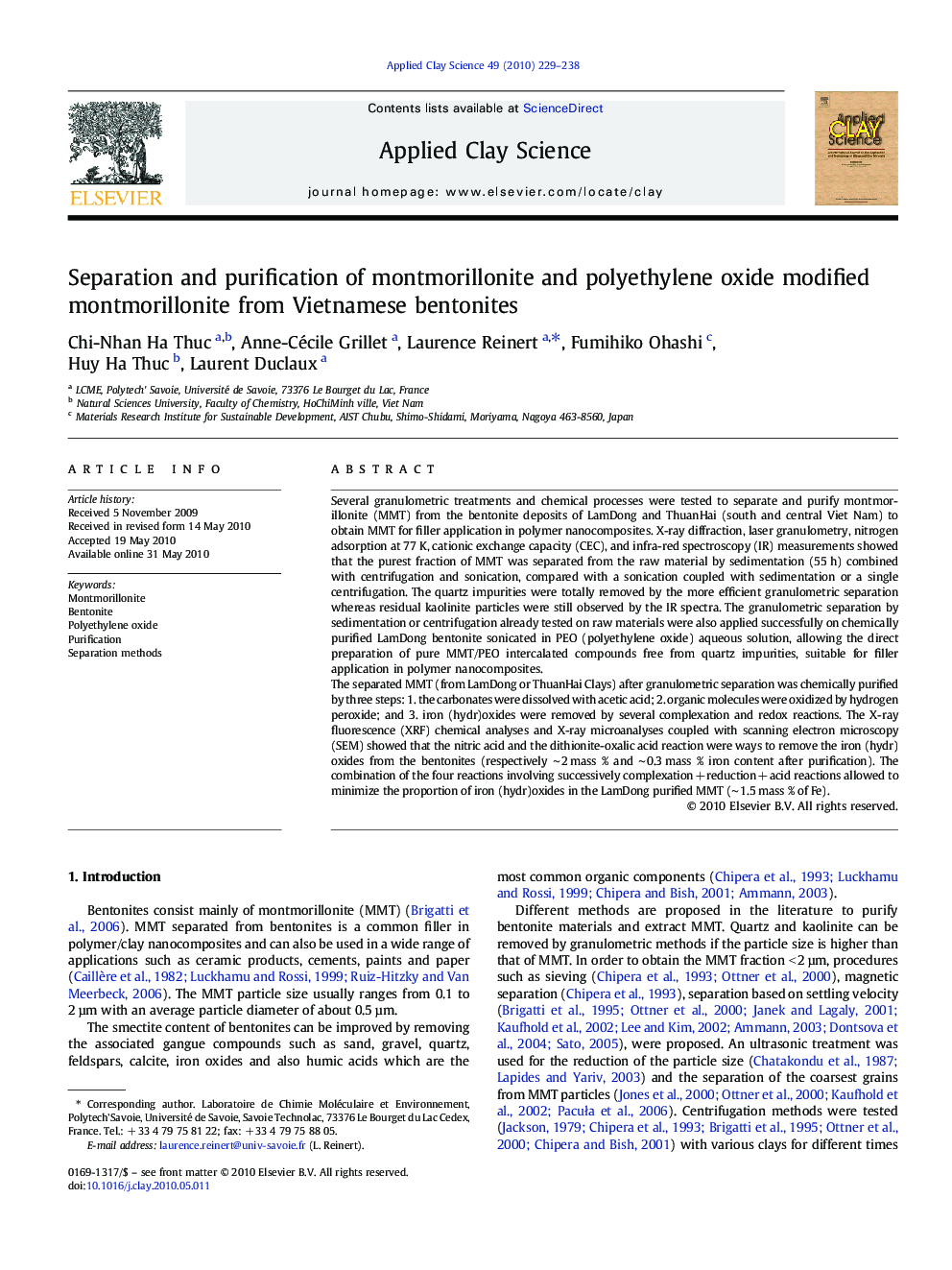| Article ID | Journal | Published Year | Pages | File Type |
|---|---|---|---|---|
| 1695859 | Applied Clay Science | 2010 | 10 Pages |
Several granulometric treatments and chemical processes were tested to separate and purify montmorillonite (MMT) from the bentonite deposits of LamDong and ThuanHai (south and central Viet Nam) to obtain MMT for filler application in polymer nanocomposites. X-ray diffraction, laser granulometry, nitrogen adsorption at 77 K, cationic exchange capacity (CEC), and infra-red spectroscopy (IR) measurements showed that the purest fraction of MMT was separated from the raw material by sedimentation (55 h) combined with centrifugation and sonication, compared with a sonication coupled with sedimentation or a single centrifugation. The quartz impurities were totally removed by the more efficient granulometric separation whereas residual kaolinite particles were still observed by the IR spectra. The granulometric separation by sedimentation or centrifugation already tested on raw materials were also applied successfully on chemically purified LamDong bentonite sonicated in PEO (polyethylene oxide) aqueous solution, allowing the direct preparation of pure MMT/PEO intercalated compounds free from quartz impurities, suitable for filler application in polymer nanocomposites.The separated MMT (from LamDong or ThuanHai Clays) after granulometric separation was chemically purified by three steps: 1. the carbonates were dissolved with acetic acid; 2. organic molecules were oxidized by hydrogen peroxide; and 3. iron (hydr)oxides were removed by several complexation and redox reactions. The X-ray fluorescence (XRF) chemical analyses and X-ray microanalyses coupled with scanning electron microscopy (SEM) showed that the nitric acid and the dithionite-oxalic acid reaction were ways to remove the iron (hydr)oxides from the bentonites (respectively ∼ 2 mass % and ∼ 0.3 mass % iron content after purification). The combination of the four reactions involving successively complexation + reduction + acid reactions allowed to minimize the proportion of iron (hydr)oxides in the LamDong purified MMT (∼ 1.5 mass % of Fe).
